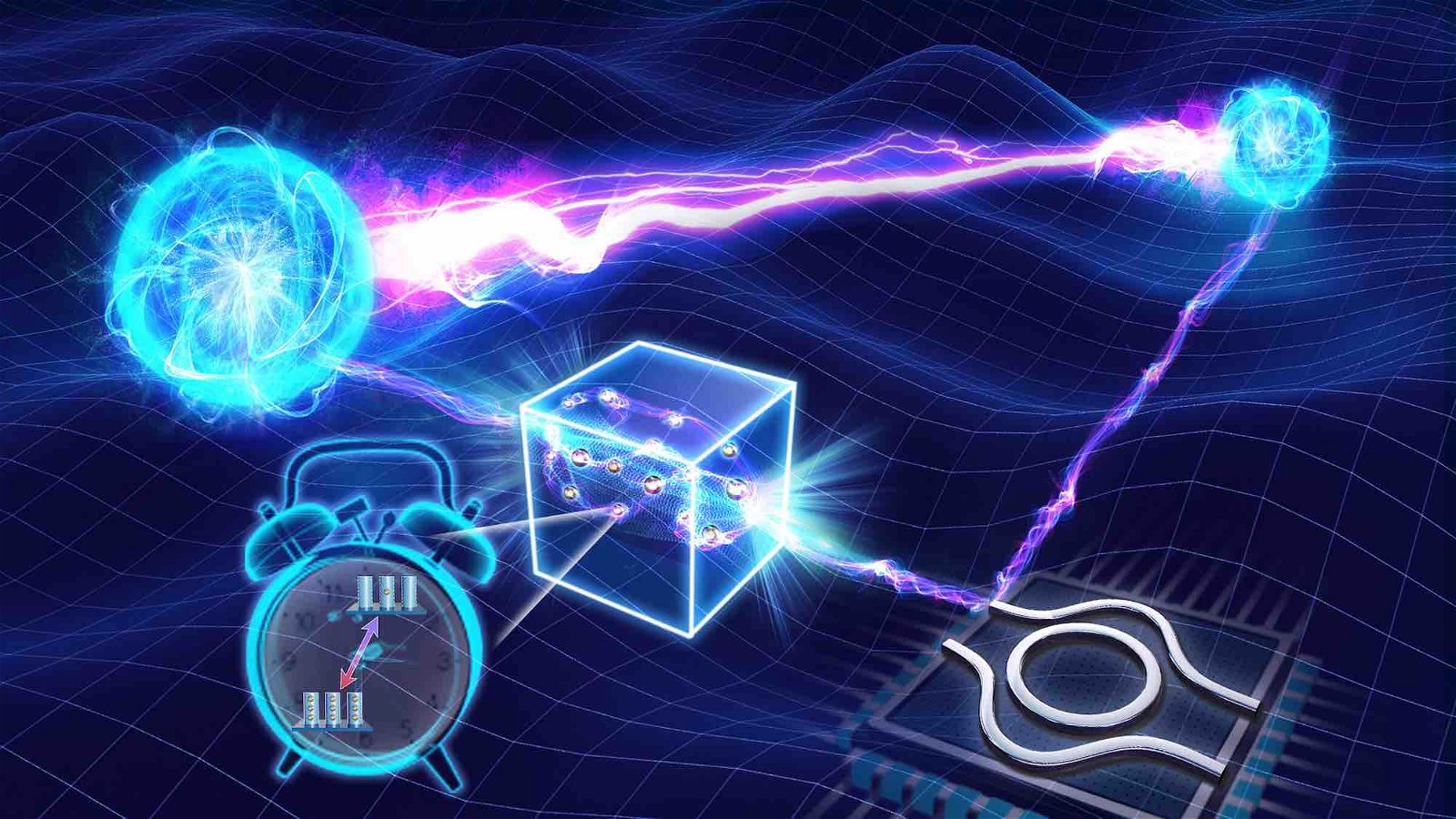Chinese researchers report the successful quantum storage of entangled photons at telecom wavelengths within a crystal, in a breakthrough achievement that reportedly lasted 387 times longer than past similar experiments.
The research team, based at Nanjing University, says their findings could potentially “pave the way for realizing quantum networks based on solid-state devices.”
The Coming Quantum Internet
Experts have differing opinions on how soon we may see a global quantum internet. However, no one disputes that once it is achieved, it will revolutionize how information is processed and secured. In the move toward that reality, researchers are currently focusing on ensuring that processes that include quantum storage and distribution of entangled photons will be compatible with existing telecommunications networks.
In the case of entangled photons, entanglement describes the quantum phenomenon where particles remain connected, which effectively allows actions performed on one to affect its entangled counterpart even from across great physical distances.
However, making sure that quantum networks work reliably using fiber-based systems, like those the Internet currently uses, presents a number of challenges, namely signal loss due to the limitations of optical fiber systems that are presently in use.
One way of overcoming these problems involves the use of devices called quantum repeaters, which can help extend the range of these systems by storing the quantum state of photons into matter. Successful quantum repeaters must accomplish three primary tasks: 1) they must match the standard telecom wavelength, which is around 1.55 μm; 2) they must be capable of storing data for long periods; and 3) they have to be able to handle multiple data streams simultaneously.
Quantum Memories and Rare Earth Ions
In the past, rare-earth elements, particularly those in the fifteen-element lanthanide series like europium and praseodymium, have shown success at achieving such requirements, revealing their promising potential as materials for use in the storage of quantum memories. However, another lanthanide that is an even more promising potential candidate is erbium, since its ions operate very close to the standard telecom wavelength.
However, one problem with this seemingly ideal lanthanide is that its performance has been somewhat limited in the past. Hence, the Nanjing University team’s recent work involved the development of ways to improve erbium’s ability to store quantum memories by increasing the time it can store quantum states.
The researchers selected a very specific variety of erbium ion, 167Er3+, which past studies have shown to store entangled photons for much longer, particularly while operating within a magnetic field. “This seminal work triggered a recent resurgence of interest in using erbium ions for quantum memory,” the team writes in a new paper detailing their work, which appeared in Nature Communications.
Notably, such experiments were also able to demonstrate the integration of quantum memory with a system that can successfully generate entangled photons, which would allow compatibility with modern manufacturing processes and facilitate large-scale production.
Entangled Photons Stored in a Photonic Crystal
In their research, the team reports that they successfully demonstrated “the storage and retrieval of the entangled state of two telecom photons generated from an integrated photonic chip.”
Integrated photonic chips, sometimes also called photonic integrated circuits, are microchips comprised of two or more photonic components that function using photons instead of electrons, as in the case of conventional microchip technologies.
Used for the detection, generation, processing, and transportation of light, integrated photonic chips can include a range of components that include amplifiers and lasers, and can be made from a range of different materials, which include electro-optic crystals.
In their research, the Nanjing University team succeeded at greatly increasing the amount of storage time of 167Er3+ ions that previous research had yielded.
“Combining the natural narrow linewidth of the entangled photons and long storage time of 167Er3+ ions, we achieve storage time of 1.936 μs, more than 387 times longer than in previous works,” the researchers report.
Although the results are indeed promising, the researchers acknowledge they still have much work to do before the full realization of systems capable of the storage efficiency and interaction between light and matter that will allow erbium-based systems that are ideal for use in high-performance quantum technologies, and can support large-scale quantum networks.
“With these experimental improvements, we anticipate 167Er3+ ions and integrated quantum photonics to become a versatile platform for high-performance quantum memory,” the researchers write, “enabling the realization of large-scale quantum networks.”
Ideally, such technologies will eventually help to facilitate a quantum internet capable of operating with solid-state devices, and the team believes their research represents a significant step toward helping make that a reality.
The team’s paper, “Quantum storage of entangled photons at telecom wavelengths in a crystal,” was recently published in Nature Communications.
Micah Hanks is the Editor-in-Chief and Co-Founder of The Debrief. He can be reached by email at micah@thedebrief.org. Follow his work at micahhanks.com and on Twitter: @MicahHanks.

